I
think Hevelius saw
the imbalance caused
by abandoning
Thuban, by breaking
the golden spirit
level connecting the
equinoxes:
... The
dream soul
went on. She
was careless
(?) and
broke the
kohe
plant with
her feet.
She named
the place 'Hatinga
Te Koe A Hau
Maka O Hiva'.
The
dream soul
went on and
came to
Roto Ire Are.
She gave the
name 'Roto
Ire Are A
Hau Maka O
Hiva'.
The dream
soul went on
and came to
Tama.
She named
the place 'Tama',
an evil fish
(he ika
kino)
with a very
long nose (he
ihu roroa)
...
Instead of a
pair of
equal
halfspheres
covering
12h, one for
winter time
and one for
the summer,
a
single-minded
time of
disorder
began to
form the
western
civilization
- no longer
was there
any
veneration
for the old,
instead an
exclusive
adoration of
what was
young and
new:
"The Romans
claimed that
it was added
by them to
the original
eleven
signs, which
is doubtless
correct in
so far as
they were
concerned in
its modern
revival as a
distinct
constellation,
for it first
appears as
Libra in
classical
times in the
Julian
calendar¹
which Caesar
as pontifex
maximus took
upon himself
to form, 46
B.C., aided
by Flavius,
the Roman
scribe, and
Sosigenes,
the
astronomer
from
Alexandria.
¹ The
much-vaunted
Julian
calendar was
substantially
the same in
its method
of
intercalation
as that
formed 238
B.C. under
Ptolemy III
(Euergetes),
- a fact
discovered
by Lepsius,
in 1866,
when he
found the
Decree of
Canopus
at Sanor
Tanis.
Some have
associated
Andrew
Marvell's
line,
Outshining
Virgo or the
Julian star,
with Libra,
but this
unquestionably
referred to
the comet of
43 B.C. that
appeared
soon after,
and, as
Augustus
asserted, in
consequence
of, Caesar's
assassination
in September
of that
year, being
utilized by
the emperor
and Caesar's
friends to
carry his
soul to
heaven."
(Allen)
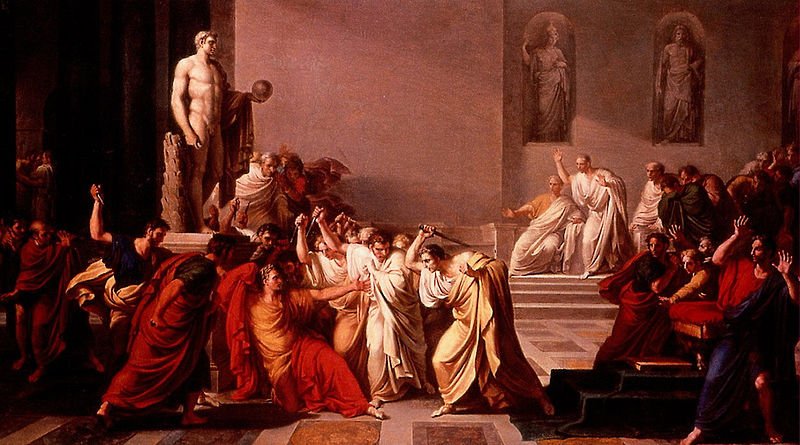
I had to
look up in
Wikipedia to
see if the
assassination
was in
September or
in March
(which
Henrikson
had stated).
It was in
March 15 in
the year 44
B.C. Why
then did
Augustus
suggested
September
was the
month? I
guess the
reason was
that
September
was at the
Full Moon
when spring
equinox was
in March. In
away it was
the same
time as
March, and
Moon was the
time giver
rather than
the Sun.
March equinox
around 76 B.C. could
have been the time
when the 'twins'
Thuban and Alrisha
were abandoned,
forced to by
the precession:
|
'Equinox
around 76
B.C. |
'March 22
(81) |
23 (448) |
|
'September
20 |
21 (264) |
'Equinox |
|
April 17
(107) |
18 |
19 (475) |
|
October 17
(290) |
18 |
19 |
 |
 |
 |
|
Cb1-1 (393) |
Cb1-2 |
Cb1-3 |
|
E tupu -
ki roto |
o te hau
tea |
|
Al
Sharatain-1
/
Ashvini-1 /
Bond-16 |
ι Arietis
(28.0), λ
Arietis
(28.2) |
ALRISHA,
χ Phoenicis
(29.2),
Alamak
(29.7) |
|
Segin,
Mesarthim,
ψ Phoenicis
(27.2),
SHERATAN,
φ Phoenicis
(27.4) |
|
Muphrid
(210.1), ζ
Centauri
(210.3) |
φ Centauri
(211.0), υ¹
Centauri
(211.1), υ²
Centauri
(211.8), τ
Virginis
(211.9) |
Agena
(212.1), θ
Apodis
(212.5),
THUBAN
(212.8) |
From that
time the
twin stars
Al
Sharatain
were at the
northern
spring
equinox, and
probably
this was
primarily
due to the
force of the
preceding
Polaris at
the opposite
side of the
sky compared
to Thuban,
the old star
at the pole.
Alrisha, the
Knot in
Aries, had
to be
abandoned at
the same
time as
Thuban,
because the
First Point
in Aries had
become more
accurate.
The
Polynesians
were hardly
impressed by
the Sun as
time giver -
he did not
have 'the
necessary
stability':
… Mâ-û-i
was also a
prophet; he
told the
people that
there would
come a
vaa ama ore
[= va'a
ama 'ore =
vaka ama
kore]
(canoe
without an
outrigger)
after which
would also
come a
vaa taura
ore
(canoe
without
cordage),
which
predictions
from
prehistoric
times the
priests and
bards
faithfully
handed to
their
people,
always
puzzled to
understand
how such
things could
be, until
the arrival
of Captain
Wallis,
whose ship
had also
later been
described
before it
appeared as
the vaa
ama ore
by more
modern
prophets. Those
went still
further and
also
described
the
foreigners
who would
bring it,
and in due
time came
before the
astonished
people the
steamship
propelled
without
rigging, and
the steam
tug,
literally,
without
cordage...
(Teuira
Henry,
Ancient
Tahiti.)
... At
Opoa, at
one of the
last great
gatherings
of the
Hau-pahu-nui,
for
idolatrous
worship,
before the
arrival of
European
ships, a
strange
thing
happened
during our
[the two
priests of
Porapora,
Auna-iti
and
Vai-au]
solemn
festivity.
Just at the
close of the
pa'i-atua
ceremony,
there came a
whirlwind
which
plucked off
the head of
a tall
spreading
tamanu
tree, named
Paruru-mata'i-i-'a'ana
(Screen-from-wind-of-aggravating-crime),
leaving the
bare trunk
standing.
This was
very
remarkable,
as tamanu
wood is very
hard and
close-grained.
Awe struck
the hearts
of all
present. The
representatives
of each
people
looked at
those of the
other in
silence for
some time,
until at
last a
priest of
Opoa
named
Vaità
(Smitten-water)
exclaimed,
- E homa,
eaha ta
'outou e
feruri nei?
(Friends,
upon what
are you
meditating?)
- Te feruri
nei i te
tapa'o o
teie ra'au i
motu nei;
a'ita te
ra'au nei i
motu mai te
po au'iu'i
mai. (We
are
wondering
what the
breaking of
this tree
may be
ominous of;
such a thing
has not
happened to
our trees
from the
remotest
age), the
people
replied. Then
Vaità
feeling
inspired
proceeded to
tell the
meaning of
this strange
event… I see
before me
the meaning
of this
strange
event! There
are coming
the glorious
children of
the Trunk
(God), who
will see
these trees
here, in
Taputapuatea.
In person,
they differ
from us, yet
they are the
same as we,
from the
Trunk, and
they will
possess this
land. There
will be an
end to our
present
customs, and
the sacred
birds of sea
and land
will come to
mourn over
what this
tree that is
severed
teaches.
This
unexpected
speech
amazed the
people and
sages, and
we enquired
where such
people were
to be found.
Te haere mai
nei na ni'a
i te ho'e
pahi ama
'ore.
(They are
coming on a
ship without
an
outrigger),
was
Vaitàs
reply. Then
in order to
illustrate
the subject,
Vaità,
seeing a
large
umete
(wooden
trough) at
hand, asked
the king to
send some
men with it
and place it
balanced
with stones
in the sea,
which was
quickly
done, and
there the
umete
sat upon the
waves with
no signs of
upsetting
amid the
applauding
shouts of
the people.
(Teuira
Henry,
Ancient
Tahiti.)
The beginning of
the time of the
severed tree was
probably
understood as
such also among
the learned men
of Europe:
|
...
The
seventh
tree
is
the
oak,
the
tree
of
Zeus,
Juppiter,
Hercules,
The
Dagda
(the
chief
of
the
elder
Irish
gods),
Thor,
and
all
the
other
Thundergods,
Jehovah
in
so
far
as
he
was
'El',
and
Allah.
The
royalty
of
the
oak-tree
needs
no
enlarging
upon:
most
people
are
familiar
with
the
argument
of
Sir
James
Frazer's
Golden
Bough,
which
concerns
the
human
sacrifice
of
the
oak-king
of
Nemi
on
Midsummer
Day.
The
fuel
of
the
midsummer
fires
is
always
oak,
the
fire
of
Vesta
at
Rome
was
fed
with
oak,
and
the
need-fire
is
always
kindled
in
an
oak-log.
When
Gwion
writes
in
the
Câd
Goddeu,
'Stout
Guardian
of
the
door,
His
name
in
every
tongue',
he
is
saying
that
doors
are
customarily
made
of
oak
as
the
strongest
and
toughest
wood
and
that
'Duir',
the
Beth-Luis-Nion
name
for
'Oak',
means
'door'
in
many
European
languages
including
Old
Goidelic
dorus,
Latin
foris,
Greek
thura,
and
German
tür,
all
derived
from
the
Sanskrit
Dwr,
and
that
Daleth,
the
Hebrew
letter
D,
means
'Door'
-
the
'l'
being
originally
an
'r'.
Midsummer
is
the
flowering
season
of
the
oak,
which
is
the
tree
of
endurance
and
triumph,
and
like
the
ash
is
said
to
'court
the
lightning
flash'.
Its
roots
are
believed
to
extend
as
deep
underground
as
its
branches
rise
in
the
air
-
Virgil
mentions
this
-
which
makes
it
emblematic
of a
god
whose
law
runs
both
in
Heaven
and
in
the
Underworld
...
The
month,
which
takes
its
name
from
Juppiter
the
oak-god,
begins
on
June
10th
and
ends
of
July
7th.
Midway
comes
St.
John's
Day,
June
24th,
the
day
on
which
the
oak-king
was
sacrificially
burned
alive.
The
Celtic
year
was
divided
into
two
halves
with
the
second
half
beginning
in
July,
apparently
after
a
seven-day
wake,
or
funeral
feast,
in
the
oak-king's
honour.
Sir
James
Frazer,
like
Gwion,
has
pointed
out
the
similarity
of
'door'
words
in
all
Indo-European
languages
and
shown
Janus
to
be a
'stout
guardian
of
the
door'
with
his
head
pointing
in
both
directions.
As
usual,
however,
he
does
not
press
his
argument
far
enough.
Duir
as
the
god
of
the
oak
month
looks
both
ways
because
his
post
is
at
the
turn
of
the
year;
which
identifies
him
with
the
Oak-god
Hercules
who
became
the
door-keeper
of
the
Gods
after
his
death.
He
is
probably
also
to
be
identified
with
the
British
god
Llyr
of
Lludd
or
Nudd,
a
god
of
the
sea
-
i.e.
a
god
of a
sea-faring
Bronze
Age
people
-
who
was
the
'father'
of
Creiddylad
(Cordelia)
an
aspect
of
the
White
Goddess;
for
according
to
Geoffrey
of
Monmouth
the
grave
of
Llyr
at
Leicester
was
in a
vault
built
in
honour
of
Janus.
Geoffrey
writes:
Cordelia
obtaining
the
government
of
the
Kingdom
buried
her
father
in a
certain
vault
which
she
ordered
to
be
made
for
him
under
the
river
Sore
in
Leicester
(Leircester)
and
which
had
been
built
originally
under
the
ground
in
honour
of
the
god
Janus.
And
here
all
the
workmen
of
the
city,
upon
the
anniversary
solemnity
of
that
festival,
used
to
begin
their
yearly
labours.
Since
Llyr
was
a
pre-Roman
God
this
amounts
to
saying
that
he
was
two-headed,
like
Janus,
and
the
patron
of
the
New
Year;
but
the
Celtic
year
began
in
the
summer,
not
in
the
winter.
Geoffrey
does
not
date
the
mourning
festival
but
it
is
likely
to
have
originally
taken
place
at
the
end
of
June
...
What
I
take
for
a
reference
to
Llyr
as
Janus
occurs
in
the
closing
paragraph
of
Merlin's
prophecy
to
the
heathen
King
Vortigern
and
his
Druids,
recorded
by
Geoffrey
of
Monmouth:
After
this
Janus
shall
never
have
priests
again.
His
door
will
be
shut
and
remain
concealed
in
Ariadne's
crannies.
In
other
words,
the
ancient
Druidic
religion
based
on
the
oak-cult
will
be
swept
away
by
Christianity
and
the
door
-
the
god
Llyr
-
will
languish
forgotten
in
the
Castle
of
Arianrhod,
the
Corona
Borealis.
This
helps
us
to
understand
the
relationship
at
Rome
of
Janus
and
the
White
Goddess
Cardea
who
is
...
the
Goddess
of
Hinges
who
came
to
Rome
from
Alba
Longa.
She
was
the
hinge
on
which
the
year
swung
-
the
ancient
Latin,
not
the
Etruscan
year
-
and
her
importance
as
such
is
recorded
in
the
Latin
adjective
cardinalis
- as
we
say
in
English
'of
cardinal
importance
-
which
was
also
applied
to
the
four
main
winds;
for
winds
were
considered
as
under
the
sole
direction
of
the
Great
Goddess
until
Classical
times.
As
Cardea
she
ruled
over
the
Celestial
Hinge
at
the
back
of
the
North
Wind
around
which,
as
Varro
explains
in
his
De
Re
Rustica,
the
mill-stone
of
the
Universe
revolves.
This
conception
appears
most
plainly
in
the
Norse
Edda,
where
the
giantesses
Fenja
and
Menja,
who
turn
the
monstrous
mill-stone
Grotte
in
the
cold
polar
night,
stand
for
the
White
Goddess
in
her
complementary
moods
of
creation
and
destruction.
Elsewhere
in
Norse
mythology
the
Goddess
is
nine-fold:
the
nine
giantesses
who
were
joint-mothers
of
the
hero
Rig,
alias
Heimdall,
the
inventor
of
the
Norse
social
system,
similarly
turned
the
cosmic
mill.
Janus
was
perhaps
not
originally
double-headed:
he
may
have
borrowed
this
peculiarity
from
the
Goddess
herself
who
at
the
Carmentalia,
the
Carmenta
Festival
in
early
January,
was
addressed
by
her
celebrants
as
'Postvorta'
and
'Antevorta'
-
'she
who
looks
both
back
and
forward'.
However,
a
Janus
with
long
hair
and
wings
appear
on
an
early
stater
of
Mellos,
a
Cretan
colony
at
Cilicia.
He
is
identified
with
the
solar
hero
Talus,
and
a
bull's
head
appears
on
the
same
coin.
In
similar
coins
of
the
late
fifth
century
B.C.
he
holds
an
eight-rayed
disc
in
his
hand
and
has
a
spiral
of
immortality
sprouting
from
his
double
head.
Here
at
last
I
can
complete
my
argument
about
Arianrhod's
Castle
and
the
'whirling
round
without
motion
between
three
elements'.
The
sacred
oak-king
was
killed
at
midsummer
and
translated
to
the
Corona
Borealis,
presided
over
by
the
White
Goddess,
which
was
then
just
dipping
over
the
Northern
horizon.
But
from
the
song
ascribed
by
Apollonius
Rhodius
to
Orpheus,
we
know
that
the
Queen
of
the
Circling
Universe,
Eurynome,
alias
Cardea,
was
identical
with
Rhea
of
Crete;
thus
Rhea
lived
at
the
axle
of
the
mill,
whirling
around
without
motion,
as
well
as
on
the
Galaxy.
This
suggests
that
in a
later
mythological
tradition
the
sacred
king
went
to
serve
her
at
the
Mill,
not
in
the
Castle,
for
Samson
after
his
blinding
and
enervation
turned
a
mill
in
Delilah's
prison-house.
Another
name
for
the
Goddess
of
the
Mill
was
Artemis
Calliste,
or
Callisto
('Most
Beautiful'),
to
whom
the
she-bear
was
sacred
in
Arcadia;
and
in
Athens
at
the
festival
of
Artemis
Brauronia,
a
girl
of
ten
years
old
and
a
girl
of
five,
dressed
in
saffron-yellow
robes
in
honour
of
the
moon,
played
the
part
of
sacred
bears.
The
Great
She-bear
and
Little
She-bear
are
still
the
names
of
the
two
constellations
that
turn
the
mill
around.
In
Greek
the
Great
Bear
Callisto
was
also
called
Helice,
which
means
both
'that
which
turns'
and
'willow-branch'
- a
reminder
that
the
willow
was
sacred
to
the
same
Goddess
...
Hercules
first
appears
in
legend
as a
pastoral
sacred
king
and,
perhaps
because
shepherds
welcome
the
birth
of
twin
lambs,
is a
twin
himself.
His
characteristics
and
history
can
be
deduced
from
a
mass
of
legends,
folk-customs
and
megalithic
monuments.
He
is
the
rain-maker
of
his
tribe
and
a
sort
of
human
thunder-storm.
Legends
connect
him
with
Libya
and
the
Atlas
Mountains;
he
may
well
have
originated
thereabouts
in
Palaeolithic
times.
The
priests
of
Egyptian
Thebes,
who
called
him
Shu,
dated
his
origin
as
'17,000
years
before
the
reign
of
King
Amasis'.
He
carries
an
oak-club,
because
the
oak
provides
his
beasts
and
his
people
with
mast
and
because
it
attracts
lightning
more
than
any
other
tree.
His
symbols
are
the
acorn;
the
rock-dove,
which
nests
in
oaks
as
well
as
in
clefts
of
rocks;
the
mistletoe,
or
Loranthus;
and
the
serpent.
All
these
are
sexual
emblems.
The
dove
was
sacred
to
the
Love-goddess
of
Greece
and
Syria;
the
serpent
was
the
most
ancient
of
phallic
totem-beasts;
the
cupped
acorn
stood
for
the
glans
penis
in
both
Greek
and
Latin;
the
mistletoe
was
an
all-heal
and
its
names
viscus
(Latin)
and
ixias
(Greek)
are
connected
with
vis
and
ischus
(strength)
-
probably
because
of
the
spermal
viscosity
of
its
berries,
sperm
being
the
vehicle
of
life.
This
Hercules
is
male
leader
of
all
orgiastic
rites
and
has
twelve
archer
companions,
including
his
spear-armed
twin,
who
is
his
tanist
or
deputy.
He
performs
an
annual
green-wood
marriage
with
a
queen
of
the
woods,
a
sort
of
Maid
Marian.
He
is a
mighty
hunter
and
makes
rain,
when
it
is
needed,
by
rattling
an
oak-club
thunderously
in a
hollow
oak
and
stirring
a
pool
with
an
oak
branch
-
alternatively,
by
rattling
pebbles
inside
a
sacred
colocinth-gourd
or,
later,
by
rolling
black
meteoric
stones
inside
a
wooden
chest
-
and
so
attracting
thunderstorms
by
sympathetic
magic.
The
manner
of
his
death
can
be
reconstructed
from
a
variety
of
legends,
folk-customs
and
other
religious
survivals.
At
mid-summer,
at
the
end
of a
half-year
reign,
Hercules
is
made
drunk
with
mead
and
led
into
the
middle
of a
circle
of
twelve
stones
arranged
around
an
oak,
in
front
of
which
stands
an
altar-stone;
the
oak
has
been
lopped
until
it
is
T-shaped.
He
is
bound
to
it
with
willow
thongs
in
the
'five-fold
bond'
which
joins
wrists,
neck,
and
ankles
together,
beaten
by
his
comrades
till
he
faints,
then
flayed,
blinded,
castrated,
impaled
with
a
mistletoe
stake,
and
finally
hacked
into
joints
on
the
altar-stone.
His
blood
is
caught
in a
basin
and
used
for
sprinkling
the
whole
tribe
to
make
them
vigorous
and
fruitful.
The
joints
are
roasted
at
twin
fires
of
oak-loppings,
kindled
with
sacred
fire
preserved
from
a
lightning-blasted
oak
or
made
by
twirling
an
alder-
or
cornel-wood
fire-drill
in
an
oak
log.
The
trunk
is
then
uprooted
and
split
into
faggots
which
are
added
to
the
flames.
The
twelve
merry-men
rush
in a
wild
figure-of-eight
dance
around
the
fires,
singing
ecstatically
and
tearing
at
the
flesh
with
their
teeth.
The
bloody
remains
are
burnt
in
the
fire,
all
except
the
genitals
and
the
head.
These
are
put
into
an
alder-wood
boat
and
floated
down
the
river
to
an
islet;
though
the
head
is
sometimes
cured
with
smoke
and
preserved
for
oracular
use.
His
tanist
succeeds
him
and
reigns
for
the
remainder
of
the
year,
when
he
is
sacrificially
killed
by a
new
Hercules
... |
The lamentations
for the death of
Great Pan came
when Polaris had
been established
as the new star
at the pole:
| 'March 15 |
16 |
17 |
18 (77) |
19 |
20 (445) |
| April 11 |
12 |
13 |
14 (104) |
15 (471) |
16 |
| October 11 |
12 (285) |
13 |
14 |
15 |
16 |
 |
 |
 |
 |
 |
 |
| *Ca14-24 |
*Ca14-25 |
*Ca14-26 |
*Ca14-27 |
*Ca14-28 |
*Ca14-29 |
| te henua |
te honu kau |
manu kake rua |
te henua |
te honu |
te rima |
| δ Phoenicis (21.5) |
no star listed (22) |
Achernar (23.3) |
no star listed (24) |
no star listed (25) |
ANA-NIA |
| POLARIS, Baten Kaitos (26.6), Metallah (26.9) |
| no star listed (204) |
Heze (205.0) |
ε Centauri (206.3) |
no star listed (207) |
τ Bootis (208.2), BENETNASH (208.5), ν Centauri (208.7), μ Centauri, υ Bootis (208.8) |
no star listed (209) |
...
Everyone has
once read, for
it comes up many
times in
literature, of
that pilot in
the reign of
Tiberius, who,
as he was
sailing along in
the Aegean on a
quiet evening,
heard a loud
voice announcing
that 'Great Pan
was dead'.
This engaging
myth was
interpreted in
two
contradictory
ways. On the one
hand, it
announced the
end of paganism:
Pan with his
pipes, the demon
of still
sun-drenched
noon, the pagan
god of glade and
pasture and the
rural idyll, had
yielded to the
supernatural. On
the other hand
the myth has
been understood
as telling of
the death of
Christ in the
19th year of
Tiberius: the
Son of God who
was everything
from Alpha to
Omega was
identified with
Pan =
'All'.
Here is the
story, as told
by a character
in Plutarch's
On why oracles
came to fail
(419 B-E):
The father of
Aemilianus the
orator, to whom
some of you have
listened, was
Epitherses, who
lived in our
town and was my
teacher in
grammar. He said
that once upon a
time in making a
voyage to Italy
he embarked on a
ship carrying
freight and many
passangers. It
was already
evening when,
near the
Echinades
Islands, the
wind dropped and
the ship drifted
near Paxi.
Almost everybody
was awake, and a
good many had
not finished
theire
after-dinner
wine.
Suddenly, from
the island of
Paxi was heard
the voice of
someone loudly
calling Thamus,
so that all were
amazed. Thamus
was an Egyptian
pilot, not known
by name to many
on board. Twice
he was called
and made no
reply, but the
third time he
answered; and
the caller,
raising his
voice, said,
'When you come
opposite to
Palodes,
announce that
Great Pan is
dead.'
On hearing this,
all, said
Epitherses, were
astounded and
reasoned among
themselves
whether it were
better to carry
out the order or
to refuse to
meddle and let
the matter go.
Under the
circumstances
Thamus made up
his mind that if
there should be
a breeze, he
would sail past
and keep quiet,
but with no wind
and a smooth sea
about the place
he would
announce what he
had heard.
So, when he came
opposite
Palodes, and
there was
neither wind nor
wave, Thamus
from the stern,
looking toward
the land, said
the words as he
heard them:
'Great Pan is
dead'. Even
before he had
finished there
was a great cry
of lamentation,
not of one
person, but of
many, mingled
with
exclamations of
amazement.
As many persons
were on the
vessel, the
story was soon
spread abroad in
Rome, and Thamus
was sent for by
Tiberius Caesar.
Tiberius became
so convinced of
the truth of the
story that he
caused an
inquiry and
investigation to
be made about
Pan; and the
scholars, who
were numerous at
his court,
conjectured that
he was the son
born of Hermes
and Penelope
...'
We should
remember
Metoro's words
around Cb1-6
(16) -
coinciding with
number 398 (not
counting day
zero) for the
cycle of Jupiter
(Father Light),
another
candidate for
Great Pan.
Should we not
add 16 to
heliacal Polaris
and reach Cb1-6?
|
'March
25 |
26
(85) |
27
(452) |
rutua
- te
pahu
-
rutua
te
maeva
-
atua
rerorero
-
atua
hiko
ura
-
hiko
o
tea
- ka
higa
te
ao
ko
te
henua
ra
ma
te
hoi
atua |
|
'September
24 |
25
(268) |
26 |
|
April
21
(111)
|
22
(478) |
23 |
|
October
21 |
22
(295) |
23 |
 |
 |
 |
|
Cb1-5 |
Cb1-6
(398) |
Cb1-7 |
|
η
Arietis
(31.9) |
no
star
listed
(32) |
θ
Arietis
(33.3),
Mira
(33.7) |
|
Neck-2 |
Al
Ghafr-13
/
Svāti-15
TAHUA-TAATA-METUA-TE-TUPU-MAVAE |
ι
Lupi,
18
Bootis
(216.3),
Khambalia
(216.4),
υ
Virginis
(216.5),
ψ
Centauri
(216.6),
ε
Apodis
(216.8) |
|
Asellus
Tertius,
κ
VIRGINIS,
14
Bootis
(214.8) |
15
Bootis
(215.2),
ARCTURUS
(215.4),
Asellus
Secundus
(215.5),
SYRMA,
λ
Bootis
(215.6),
η
Apodis
(215.8) |
|
'March
28 |
29 |
30
(455) |
31
(90) |
|
'September
27 |
28 |
29 |
30
(273) |
|
April
24 |
25 |
26
(116) |
27 |
|
October
24 |
25 |
26 |
27
(300) |
 |
 |
 |
 |
|
Cb1-8 |
Cb1-9 |
Cb1-10 |
Cb1-11
(403) |
|
no
star
listed
(34) |
ξ
Arietis
(35.0) |
no
star
listed
(36) |
no
star
listed
(37) |
|
Asellus
Primus
(217.8) |
τ
Lupi
(218.1),
φ
Virginis
(218.7)
Fomalhaut |
σ
Lupi
(219.1),
ρ
Bootis
(219.5),
Haris
(219.7) |
σ
Bootis
(220.2),
η
Centauri
(220.4) |
In Cb1-16 the
nightside string
connecting left
and right has
been broken. I
correlate rutua
- te pahu -
rutua te maeva
(sound of
drums, sound of
sky roof moving) with
the 16th Mayan
drum month
Pax
(peculiarly
similar in name to the
windless Aegean island
Paxi where
suddenly could
be heard a loud
voice calling
out).
 |
 |
200 |
 |
| 13 Mac |
14 Kankin |
15 Moan |
 |
 |
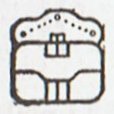 |
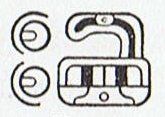 |
| 16 Pax |
17 Kayab |
18 Cumhu |
19 Vayeb |
... There is a
sign, tun,
which occurs
both in 16
Pax and
19 Vayeb,
and it has been
identified as a
picture of a log
drum:
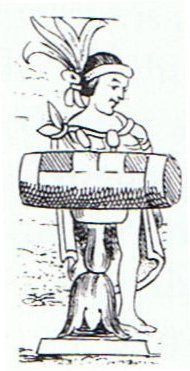
The tun
glyph was
identified as a
wooden drum by
Brinton ... and
Marshal H.
Saville
immediately
accepted it ...
[the figure
above] shows the
Aztec drum
representation
relied on by
Brinton to
demonstrate his
point. It was
not then known
that an
ancestral Mayan
word for drum
was *tun:
Yucatec
tunkul
'divine drum'
(?); Quiche
tun 'hollow
log drum';
Chorti tun
'hollow log
drum' ...
(Kelley)
The word tun
was used when
counting, for
instance
in katun
= 20 days, and
it had a glyph
of its own:
 |
| tun |
The [tun]
glyph is nearly
the same as that
for the month
Pax ...
except that the
top part of the
latter is split
or divided by
two curving
lines. Brinton,
without
referring to the
Pax
glyph,
identified the
tun glyph
as the drum
called in
Yucatec pax
che (pax
'musical
instrument';
che < *te
'wooden).
Yucatec pax
means 'broken,
disappeared',
and Quiche
paxih means,
among other
things, 'split,
divide, break,
separate'. It
would seem that
the dividing
lines on the
Pax glyph
may have been
used as a
semantic/phonetic
determinative
indicating that
the drum should
be read pax,
not tun
... Thus, one
may expect that
this glyph was
used elsewhere
meaning 'to
break' and
possibly for
'medicine' (Yuc.
pax,
Tzel., Tzo.
pox).
(Kelley)
The idea of
'break' agrees
with the picture
in Cb1-6 (where
1-6 presumably
is to be read as
16, the number
of the Pax
month)
...
Above I have
reversed the
Mayan drum lady
to 'translate'
the time order
to our own
convention,
reading from
left to right.
We can then see
her leg at
right, in front,
but maybe there
is a 'yoke'
here, uniting
her leg with the
left leg cut
with a knife
from a butchered
Jupiter. His
right leg could
be somewhere
else, perhaps
down in
Xibalba. The
strange package
in front of
Horus - similar
to a reversed
Phoenician
kaph -
contains a leg
and above there
is a knife:
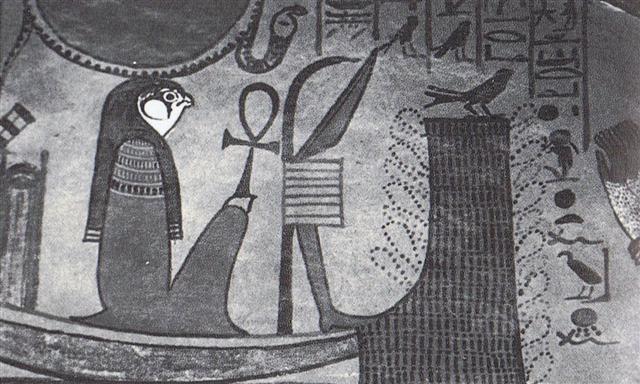

|
Egyptian
hand |
 |
Phoenician
kaph |
 |
Greek
kappa |
Κ
(κ) |
|
Kaph
is
thought
to
have
been
derived
from
a
pictogram
of a
hand
(in
both
modern
Arabic
and
modern
Hebrew,
kaph
means
palm/grip)
...
...
The
manik,
with
the
tzab,
or
serpent's
rattles
as
prefix,
runs
across
Madrid
tz.
22 ,
the
figures
in
the
pictures
all
holding
the
rattle;
it
runs
across
the
hunting
scenes
of
Madrid
tz.
61,
62,
and
finally
appears
in
all
four
clauses
of
tz.
175,
the
so-called
'baptism'
tzolkin.
It
seems
impossible,
with
all
this,
to
avoid
assigning
the
value
of
grasping
or
receiving.
But
in
the
final
confirmation,
we
have
the
direct
evidence
of
the
signs
for
East
and
West.
For
the
East
we
have
the
glyph
Ahau-Kin,
the
Lord
Sun,
the
Lord
of
Day;
for
the
West
we
have
Manik-Kin,
exactly
corresponding
to
the
term
Chikin,
the
biting
or
eating
of
the
Sun,
seizing
it
in
the
mouth.

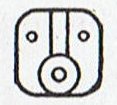

The
pictures
(from
Gates)
show
east,
north,
west,
and
south;
respectively
(the
lower
two
glyphs)
'Lord'
(Ahau)
and
'grasp'
(Manik).
Manik
was
the
7th
day
sign
of
the
20
and
Ahau
the
last
... |
 |
32 |
no glyph |
 |
 |
|
Gb7-30
(440) |
Ga1-1 |
Ga1-2
(475) |
|
η
Arietis
(31.9) |
Hyadum
II (γ
Tauri)
(64.2) |
AIN, θ¹
Tauri,
θ² Tauri
(65.7) |
no star
listed
(66) |
|
Asellus
Tertius,
κ
VIRGINIS,
14
Bootis
(214.8) |
In Gb7-30 -
significantly at
nakshatra κ
Virginis - we
can see a pair
of arms but only
a single leg.
 |
 |
| vae |
haati |
| Hati
Hati 1. To break (v.t., v.i.); figuratively: he hati te pou oka, to die, of a hopu manu in the exercise of his office (en route from Motu Nui to Orongo). 2. Closing word of certain songs. Vanaga.
Hahati. 1. To break (see hati). 2. Roughly treated, broken (from physical exertion: ku hahati á te hakari) 3. To take to the sea: he hahati te vaka. Vanaga.
Ha(ha)ti. To strike, to break, to peel off bark; slip, cutting, breaking, flow, wave (aati, ati, hahati); tai hati, breakers, surf; tumu hatihati, weak in the legs; hakahati, to persuade; hatipu, slate. P Pau.: fati, to break. Mgv.: ati, hati, to break, to smash. Mq.: fati, hati, id. Ta.: fati, to rupture, to break, to conquer. Churchill. |
| Atiga
Angle, corner. Mgv.: hatiga, the corner of a house; hatiga, hatihatiga, the joints or articulation of a limb. Mq.: fatina, hatika, joint, articulation, link. Ta.: fatiraa, articulation. Churchill. |
HAKI, v. Haw., also ha'i and ha'e, primary meaning to break open, separate, as the lips about to speak, to break, as a bone or other brittle thing, to break off, to stop, tear, rend, to speak, tell, bark as a dog; hahai, to break away, follow, pursue, chase; hai, a broken place, a joint; hakina, a portion, part; ha'ina, saying; hae, something torn, as a piece of kapa or cloth, a flog, ensign.
Sam., fati, to break, break off; fa'i, to break off, pluck off, as a leaf, wrench off; fai, to say, speak, abuse, deride; sae, to tear off, rend; ma-sae, torn. Tah., fati, to break, break up, broken; fai, confess, reveal, deceive; faifai, to gather or pick fruit; haea, torn, rent; s. deceit, duplicity; hae-hae, tear anything, break an agreement; hahae, id. Tong., fati, break, rend. Marqu., fati, fe-fati, to break, tear, rend; fai, to tell, confess; fefai, to dispute.
The same double meaning of 'to break' and 'to say' is found in the New Zealand and other Polynesian dialects.
Malg., hai, haïk, voice, address, call.
Lat., seco, cut off, cleave, divide; securis, hatchet; segmentum, cutting, division, fragment; seculum (sc. temporis), sector, follow eagerly, chase, pursue; sequor, follow; sica, a dagger; sicilis, id., a knife; saga, sagus, a fortune-teller.
Greek, άγνυμι, break, snap, shiver, from Ѓαγ (Liddell and Scott); άγν, breakage, fragment; έκας, adv, far off, far away. Liddell and Scott consider έκας akin to έκαςτος, each, every, 'in the sense of apart, by itself', and they refer to the analysis of Curtius ... comparing Sanskrit kas, kâ, kat (quis, qua, quid), who of two, of many, &c. Doubtless έκας and έκαςτος are akin 'in the sense of apart, by itself', but that sense arises from the previous sense of separating, cutting off, breaking off, and thus more naturally connects itself with the Latin sec-o, sac-er, and that family of words and ideas, than with such a forced compound as είς and κας.
Sanskr., sach, to follow. Zend, hach, id. (Vid. Haug, 'Essay on Parsis'.) I am well aware that most, perhaps all, prominent philologists of the present time - 'whose shoe-strings I am not worthy to unlace' - refer the Latin sequor, secus, even sacer, and the Greek έπω, έπομαι, to this Sanskrit sach. Benfey even refers the Greek έκας to this sach, as explanatory of its origin and meaning.
But, under correction, and even without the Polynesian congeners, I should hold that sach, 'to follow', in order to be a relative to sacer, doubtless originally meaning 'set apart', then 'devoted, holy', and of έκας, 'far off', doubtless originally meaning something 'separated', 'cut off from, apart from', must also originally have had a meaning of 'to be separated from, apart from', and then derivatively 'to come after, to follow'.
The sense of 'to follow' implies the sense of 'to be apart from, to come after', something preceding. The links of this connection in sense are lost in Sanskrit, but still survive in the Polynesian haki, fati, and its contracted form hai, fai, hahai, as shown above. I am therefore inclined to rank the Latin sequor as a derivative of seco, 'to cut off, take off'.
Welsh, haciaw, to hack; hag, a gash, cut; segur, apart, separate; segru, to put apart; hoc, a bill-hook; hicel, id.
A.-Sax., saga, a saw; seax, knife; haccan, to cut, hack; sægan, to saw; saga, speech, story; secan, to seek.
Anc. Germ., seh, sech, a ploughshare. Perhaps the Goth. hakul, A.-Sax. hacele, a cloak, ultimately refer themselves to the Polynes. hae, a piece of cloth, a flag. Anc. Slav., sieshti (siekā), to cut; siekyra, hatchet.
Judge Andrews in his Hawaiian-English Dictionary observes the connection in Hawaiian ideas between 'speaking, declaring', and 'breaking'. The primary idea, which probably underlies both, is found in the Hawaiian 'to open, to separate, as the lips in speaking or about to speak'; and it will be observed that the same development in two directions shows itself in all the Polynesian diaclects, as well as in several of the West Aryan dialects ... (Fornander)
|
...
Sorrowing,
then,
the two
women
placed
Osiris's
coffer
on a
boat,
and when
the
goddess
Isis was
alone
with it
at sea,
she
opened
the
chest
and,
laying
her face
on the
face of
her
brother,
kissed
him and
wept.
The myth
goes on
to tell
of the
blessed
boat's
arrival
in the
marshes
of the
Delta,
and of
how Set,
one
night
hunting
the boar
by the
light of
the full
moon,
discovered
the
sarcophagus
and tore
the body
into
fourteen
pieces,
which he
scattered
abroad;
so that,
once
again,
the
goddess
had a
difficult
task
before
her. She
was
assisted,
this
time,
however,
by her
little
son
Horus,
who had
the head
of a
hawk, by
the son
of her
sister
Nephtys,
little
Anubis,
who had
the head
of a
jackal,
and by
Nephtys
herself,
the
sister-bride
of their
wicked
brother
Set.
Anubis,
the
elder of
the two
boys,
had been
conceived
one very
dark
night,
we are
told,
when
Osiris
mistook
Nephtys
for
Isis; so
that by
some it
is
argued
that the
malice
of Set
must
have
been
inspired
not by
the
public
virtue
and good
name of
the
noble
culture
hero,
but by
this
domestic
inadventure.
The
younger,
but true
son,
Horus,
on the
other
hand,
had been
more
fortunately
conceived
-
according
to some,
when
Isis lay
upon her
dead
brother
in the
boat,
or,
according
to
others,
as she
fluttered
about
the
palace
pillar
in the
form of
a bird.
The four
bereaved
and
searching
divinities,
the two
mothers
and
their
two
sons,
were
joined
by a
fifth,
the
moon-god
Thoth
(who
appears
sometimes
in the
form of
an
ibis-headed
scribe,
at other
times in
the form
of a
baboon),
and
together
they
found
all of
Osiris
save his
genital
member,
which
had been
swallowed
by a
fish.
They
tightly
swathed
the
broken
body in
linen
bandages,
and when
they
performed
over it
the
rites
that
thereafter
were to
be
continued
in Egypt
in the
ceremonial
burial
of
kings,
Isis
fanned
the
corpse
with her
wings
and
Osiris
revived,
to
become
the
ruler of
the
dead. He
now sits
majestically
in the
underworld,
in the
Hall of
the Two
Truths,
assisted
by
forty-two
assessors,
one from
each of
the
principal
districts
of
Egypt;
and
there he
judges
the
souls of
the
dead.
These
confess
before
him, and
when
their
hearts
have
been
weighed
in a
balance
against
a
feather,
receive,
according
to their
lives,
the
reward
of
virtue
and the
punishment
of sin.
|



























